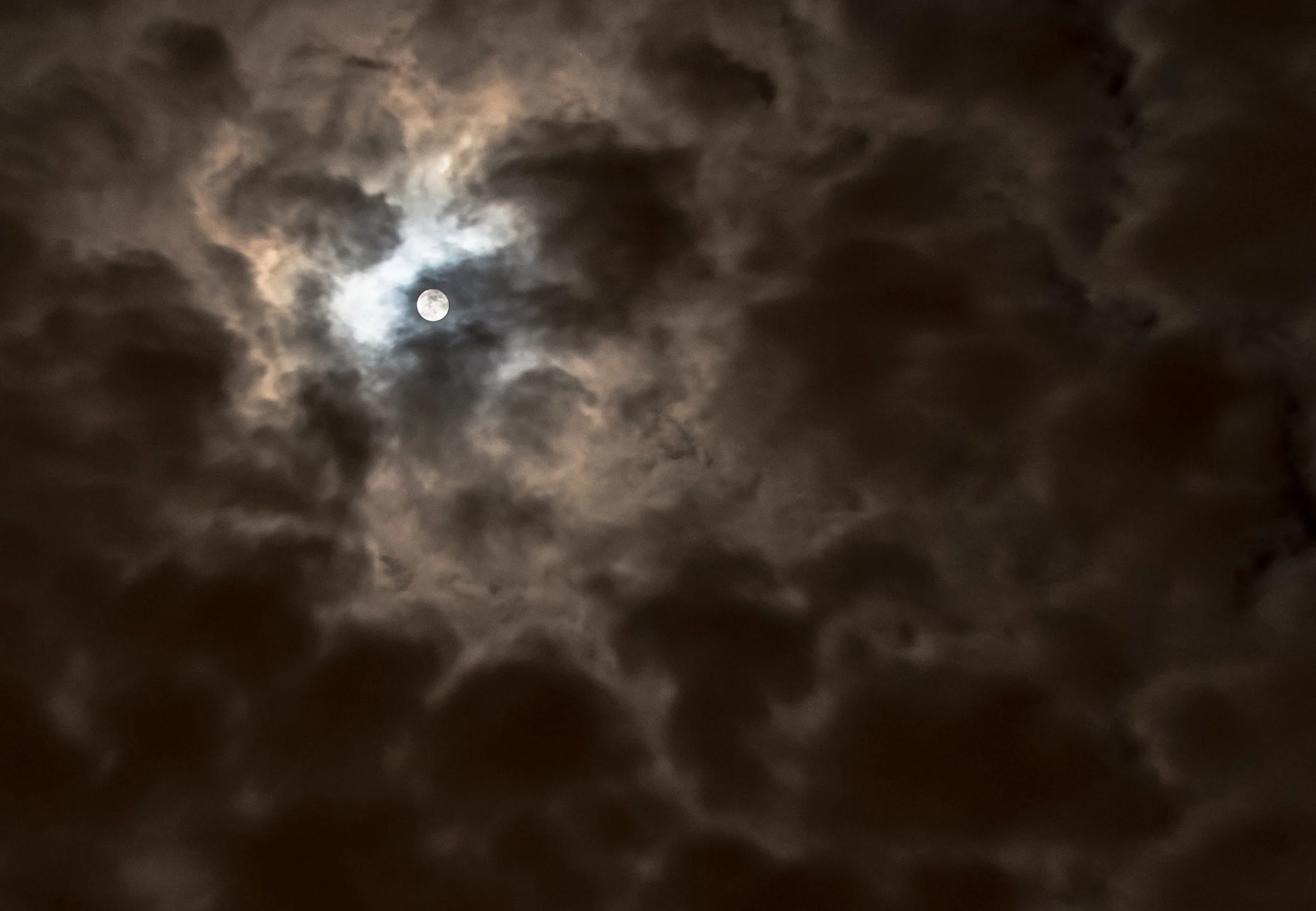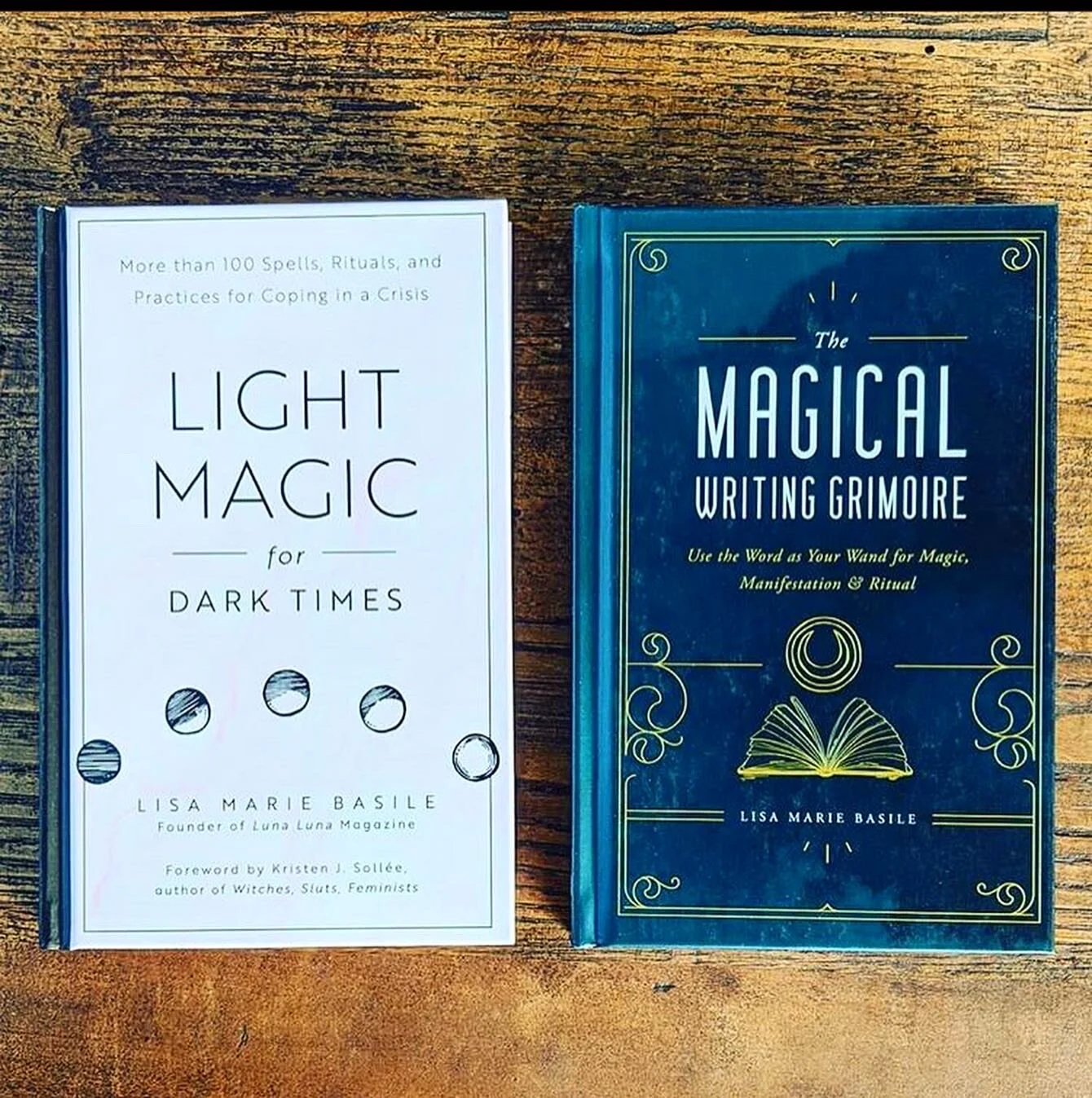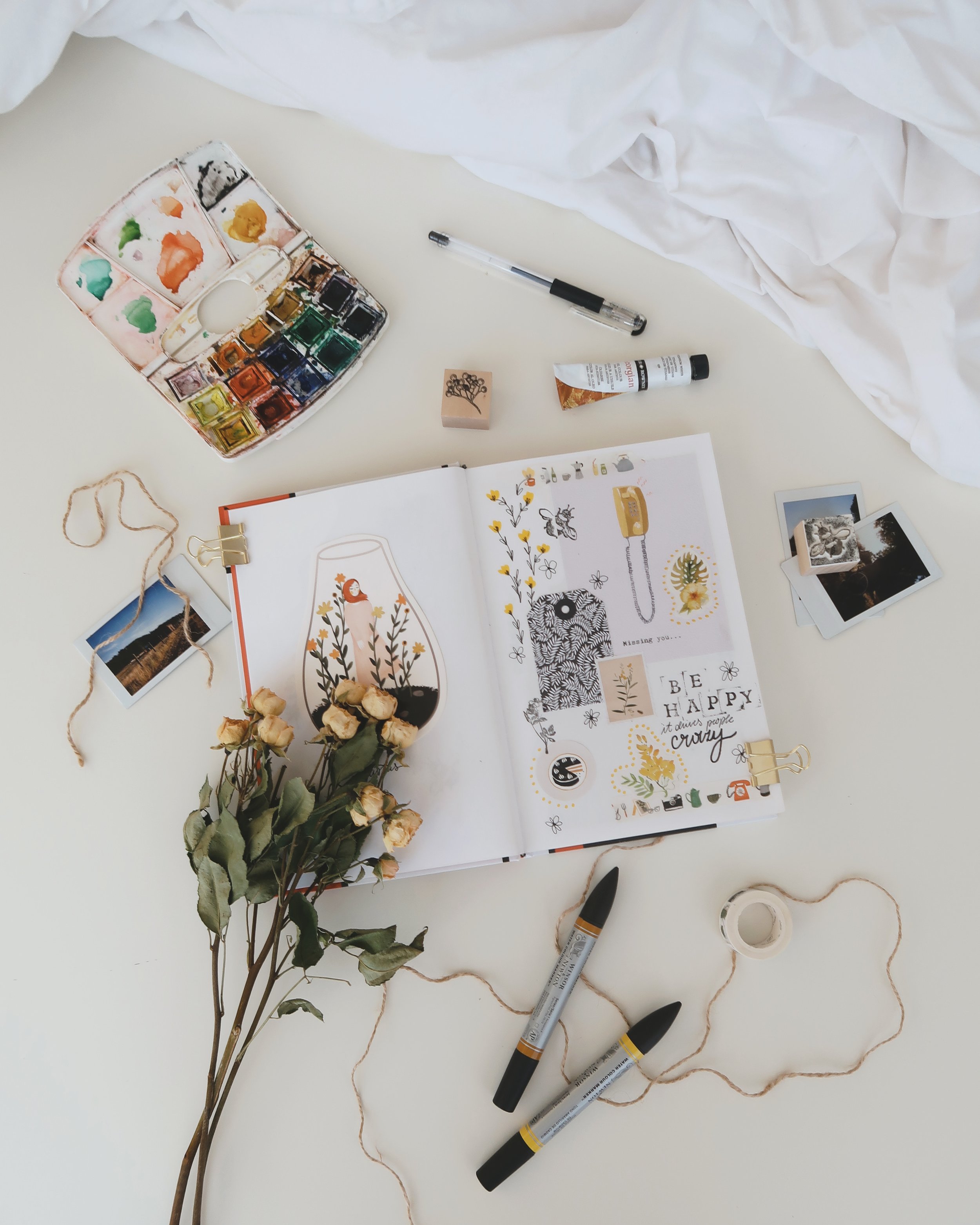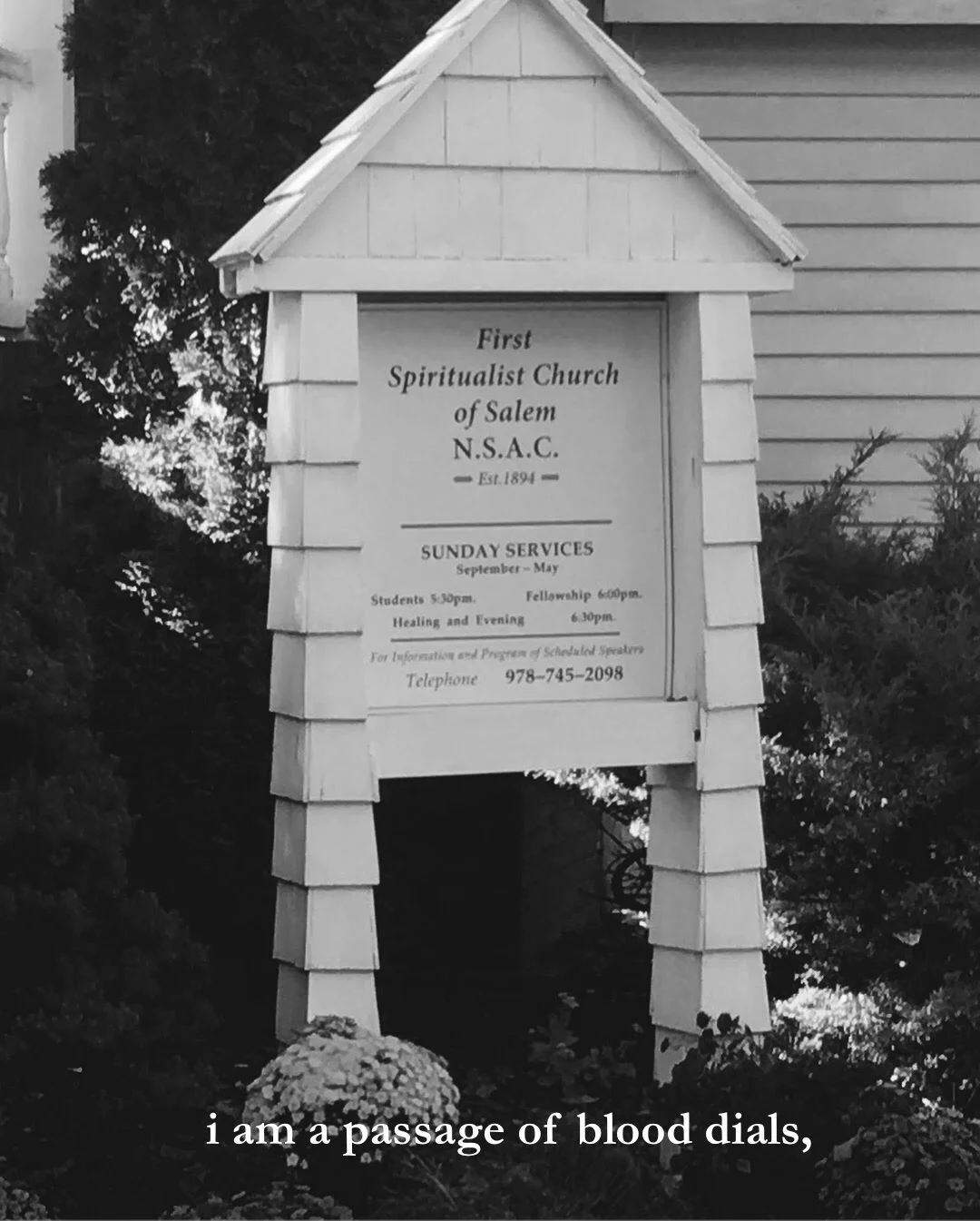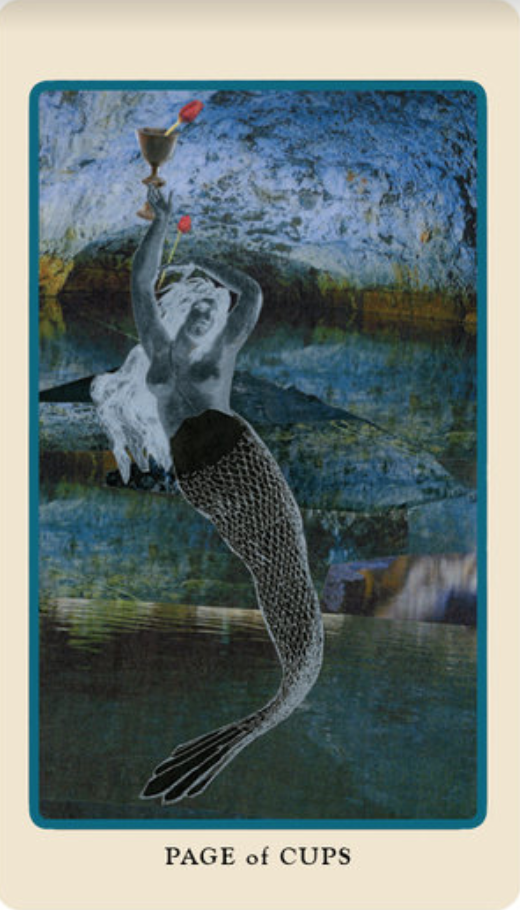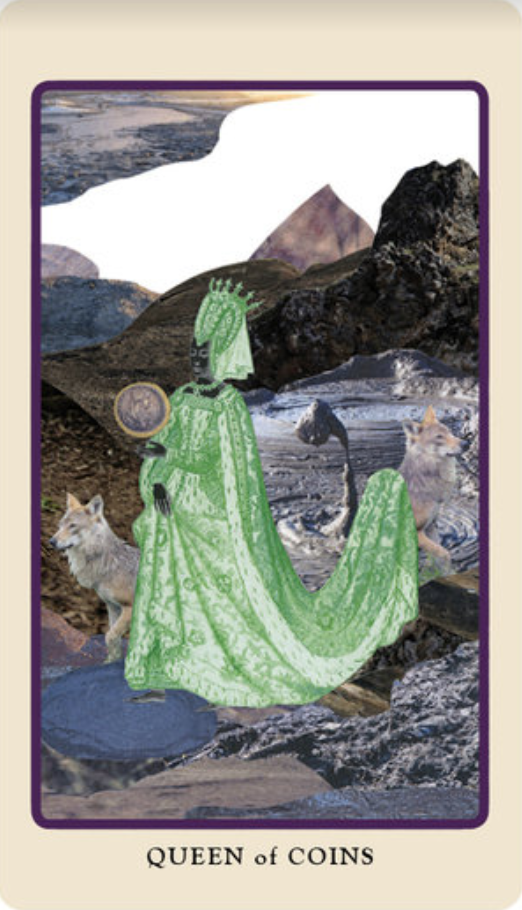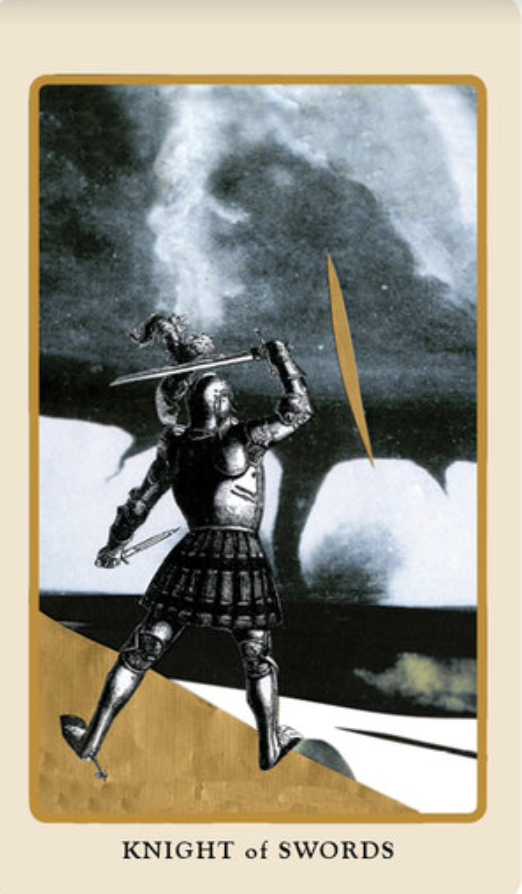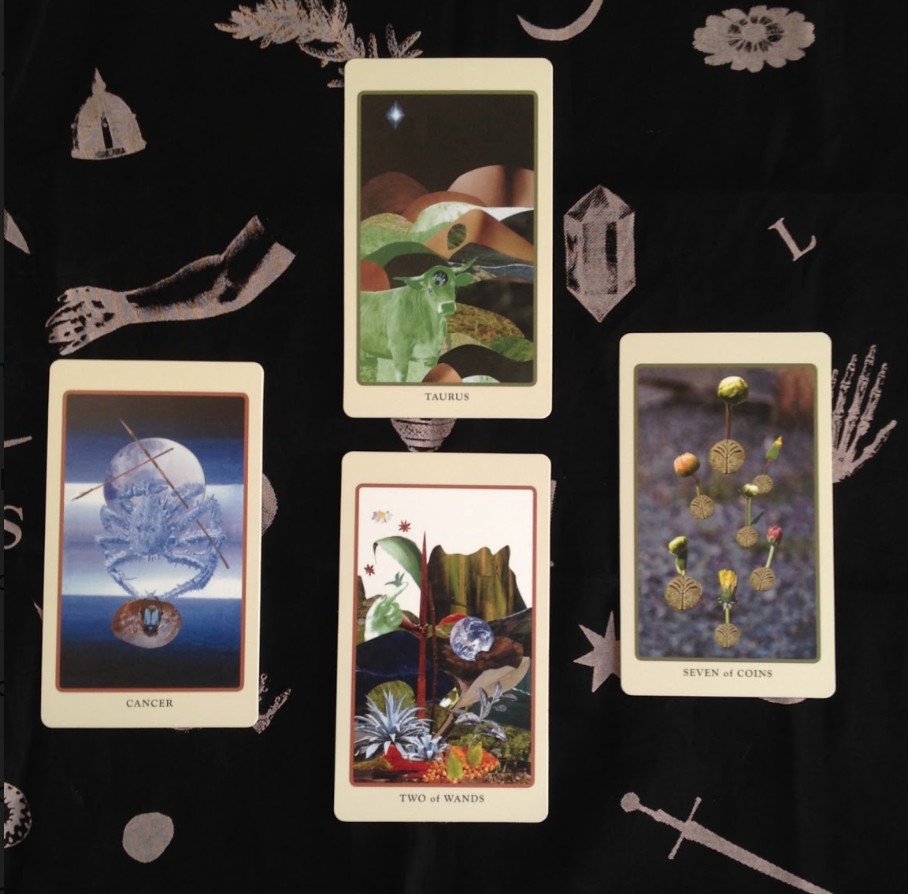BY SELENA CHAMBERS
Jessa Crispin and Jen May’s Spolia Tarot Deck is a collaboration that, after three years in the making, was Kickstarted and quickly funded last December. A modern riff on Tarot’s history, it remixes the Raider-Waite-Smith system with that of the Italian Minchiate and Sola Busca decks, allowing readers to explore 94 fully illustrated (including elemental and zodiac) cards. Based on six years of research, the deck encompasses numerology, astrology, alchemy, world mythology, art and literary history, as well as the symbolic language of flora, fauna, and minerals.
It is very much about reclaiming intellectual spiritualism, when art and science worked together to find the seat of the soul. By using esoteric systems like alchemy—whose seeming sorcery stemmed from the integrating creative explorations with those of the natural world—Spolia provides a creative pathway that doesn’t just lead to art making, but to the reinvention of more authentic selves. It has quickly become my go to deck, for reasons I write about here, in my review.
Rich and complex, I wanted to know more about the behind-the-scenes making of the deck, and had the opportunity to interview Jessa and Jen via email. It was an insightful discussion on not just tarot, but on greater trends within it and without. The Spolia Tarot Deck can be purchased via their store.
Selena Chambers: What do you both feel modern Tarot is missing or getting wrong in 21st century revisioning? What’s it getting right?
Jessa Crispin: To me there is less playfulness. Also, not to be an asshole, but with a lot of decks there's this feeling of some artist or illustrator taking on the task because they thought it would be fun or interesting, not because they actually know anything about the history of the deck or its deeper meanings. So you end up with a lot of very pretty but ultimately meaningless decks.
Jen May: There are so many tarot decks being produced right now - it’s totally overwhelming. Of course, we are now adding to the pile. We would joke while very slowly making the deck that by the time we were finished this current popularity of tarot would be over. There is probably some oversaturation. Some cashing in on the current Tarot/witch moment that is maybe not so great. At the same time, I think there is now a lot more variations in who or what is represented in the cards and who is creating the text, allowing “modern” tarot to be more queer, less binaried and less white than what is seen in some of the more "classic" decks or texts. That is a good thing, obviously.
SC: From researching historical tarot, what visual/symbolic rubble does the deck recover and reclaim that 20th century revisionists tried to throw away?
JC: Jen and I sent a lot of pictures back and forth, lots of paintings and symbols, lots of photos from trips to art museums, lots of Keanu gifs, trying to find visual representations that would be appropriate for the deck. So we're pulling from a thousand years of imagery, and not just from Western Europe, but Central Europe, Central Asia, the Middle East, and so on.
I remember being in Florence and losing my mind over some Botticelli (because Botticelli is a fucking witch) and emailing Jen all these photos. Every line, every dab of paint has meaning to Botticelli, he was intentionally creating white magic with his art, using his painting as a literal ritual. And I was trying to imbue our project with the same intention.
Because magic to me is not, oh, I'm going to burn some candles and then the gods will send me a lover of these exact specifications. It's where you put your attention, that creates your world. Not in a The Secret way, in a Simone Weil way. Tarot is just a way of guiding and bringing meaning to your attention.
SC: Collage is no stranger to contemporary decks, were there any concerns on how to keep the images fresh within this medium while staying true to the individual style and honoring that of Colman Smith’s?
JM: The process for each card started with Jessa’s emails. Usually after reading her thoughts on the card and taking some time to stare at multiple versions of the card I’d have some initial ideas - colors, pose for a figure, associations - flowers or setting. I’d start researching and gathering imagery and go from there. Every card is made from cut paper and physical materials. I guess it is important to mention that as some of them could be read as being done in Photoshop. The fact that it is created by hand with scraps and meticulously selected, cut and glued pieces of paper is important to me, and I think the meaning of the deck. I have archives of scraps of paper and images I’ve saved that I would use for some of the imagery, though often I’d need to seek out specific images for a card and would sometimes create the pose or figure I needed by doing a kind of Frankenstein operation and piecing together multiple figures.
I created some of the very bright, bold colors by altering images on photocopy machines. I spent a deranged amount of time at Kinkos in addition to the time at my desk cutting paper. I didn’t have a specific size or format I’d use so some of the images are tiny and some are 20” in height. I’d send Jessa photos as I worked on it and wouldn’t glue anything down until we both agreed the card was done. After all of the artwork was finished, I worked with my friend Tara Romeo who is a phenomenal creative director and designer and very patient person to take all of these non-uniform images and turn them into an actual, functional object. Without Tara the deck would still be a crazy pile of paper on my desk.
I wasn’t very concerned on keeping images fresh or staying true to Pamela Coleman Smith’s incredible and iconic imagery. I was really just trying to convey what we saw the meaning of the card to be, which sometimes references Coleman Smith’s cards explicitly and sometimes does not at all. The process was both very practical, in trying to be clear with our interpretation while also remaining pretty intuitive.
SC: What were the hardest cards for you to interpret and design?
JC: There were some cards that just felt like they took forever to truly come together. And we were daunted by the High Priestess, but really, she was I think easy once we started the actual work. I think Justice was hard, Scorpio took forever until it felt right. Justice was difficult only because it's not a card I care about. I understand its importance and I get its meaning, but when I pull it for myself, I roll my eyes. Like, yeah, great, this boring shit again.
JM: The Scorpio card was a nightmare for me. I didn’t actually finish it and glue everything down until every other card was scanned and I absolutely had to. It always felt off or wrong. Being a Scorpio this felt like some kind of sad metaphor... The Devil wasn’t necessarily difficult to understand but it took me a while to find the right imagery. I originally tried to make our Devil the most terrifying of all time with over the top spooky imagery. It wasn’t right. The more minimal image we ended up with is more effective.
SC: How has the process of making your own deck changed, challenged, and/or reinforced the purpose of Tarot for you?
JC: I think it reinforced the idea for me that this is a serious pursuit. The whole Instagram witchcraft shit bothers the hell out of me. I hate a dilettante. Every color, every gesture, every flower means something and changes the experience. Things matter, words matter. It's okay to take things deeply seriously. But people treat tarot, astrology, and witchcraft like it's okay to just dabble in it, and that bothers me.
JM: Making a deck is a very specific way to interact with the tarot. It’s weird, I now feel too close and removed from it. I would agree with Jessa that it reinforces the weight of it, as does seeing it out in the world being used by other people.
SC: You have stated in both Creative Tarot and in interviews that you don't have a high tolerance for “magical woo-woo,” but Tarot’s association and tradition of divination for both occult and new-age purposes drops you in the Self-Care/ Witchcraft cottage industry Venn diagram. What are your thoughts on the rise of this witchy mainstream, or its revamped emphasis as self-care?
JC: I should say I don't have time for magical woo-woo, but I do have time for the rigorous pursuit of magic and art. So I have very little to say to crystal mongers, but I do have things to say to people who have treated magic and mysticism as a serious intellectual and spiritual pursuit, like Ioan Culianu, Mircea Eliade, Frances Yates, Ficino, Botticelli, Servetus, St Teresa of Avila, St Hildegard of Bingen, Ernesto de Martino, and so on. And of course Maud Gonne.
I don't think what we have is a true witchcraft revival. I think what we have is a fad. I do meet serious practitioners, but they are drowned the fuck out by dabblers. Tourists. In the way that everyone is a feminist while doing absolutely nothing to pursue or understand that ideology, everyone is a witch while doing nothing to pursue or understand that religion.
SC: Jen, I know you said Tarot was new to you when you began illustrating for “Reading the Tarot,” so what has surprised you the most learning about this system? Has this project changed how you approach your art, now?
JM: I was a beginner but not a total novice. I knew enough about Tarot that there weren’t too many surprises. Learning the associations for each card - astrological, botanical, herbal, color, location (like, for example, Scorpio rule "places where reptiles gather, deserted places, prisons and places of grief and mourning." Also "ruinous houses near water.") was really interesting and a part of the tarot I was not very familiar with. Jessa’s knowledge and research on these connections informed the deck in a very major way.
I don’t think the project has changed the way I approach my personal artwork very much. This project was very much about learning to think about the meanings of the cards or certain concepts in a new very specific visual language. My own artwork tends to be minimal, delicate, and abstract with imagery drawn from the natural world and cryptic references to popular culture. For the deck I had to make imagery that could be useful to people - bold, figurative, narrative work with a clear meaning. I very much consider the artwork a collaboration with Jessa, as I would have never made anything that looks like this deck if I did it alone.
SC: It seems like one perk to making your own deck would be righting the wrongs. I especially appreciate the rescuing of Hekate from the Queen of Wands to give her full tribute as the Moon. What, if any, is the personal significance with this deity that lead to this upgrade?
JC: I don't think either of us looked at this project as “righting wrongs,” just adding some variety. I think one thing that bothered both of us is how standard tarot decks have become. If you look at pre-RWS decks, there is so much variety. Both in what cards are included in each deck and in the imagery and associations. I've always been more attracted to the older decks than the modern, and I wanted to pull some of that variety back in.
As far as Hekate goes, all I can say is I was in Romania when I sent the email to Jen asking her if she wanted to do the deck. And when I was in Sibiu, which is this creepy and beautiful little town in Transylvania, there was this Hekate statue in the center of town. And I kept accidentally running into it. I would go what I thought was north, or I would take a different route, or I would go looking for something else, and then I would run smack back into this triple faced goddess statue.
JM: While we were working on this card I became sort of obsessed by a section of the Hekate wikipedia page titled “The Nature of Her Cult” that read: “Regarding the nature of her cult, it has been remarked, ‘she is more at home on the fringes than in the center of Greek polytheism. Intrinsically ambivalent and polymorphous, she straddles conventional boundaries and eludes definition.’”
I realize referencing a wikipedia page here may seem silly or dumb, but I was truly moved by it. I’m glad I saved the text as it’s no longer there.
SC: Another change I appreciated: In the RWS deck, there are a few cards that are blatantly visually connected—The Lovers and The Devil; The Wheel of Fortune and The World—that seemed severed in the Spolia deck. Was this visual severing conscious? Was there a desire to give more independence to each phase of the Major Arcana?
JC: I am more interested in the number connections of the deck than these other connections, so, the Hierophant's ties to the Devil, the High Priestess's tie to the Hanged Man, and so on. To me, it was more about reforming those connections than thinking about it in the sense of removing these others.
But again, some ideas about certain tarot cards became standard and unwavering after RWS, and the modern understanding of the Lovers card, for example, never really rang true to me. I don't think the Lovers is about romantic love, I think it's Eros, which is different. And so to me, I needed claustrophobia, I needed airlessness, a total remove from the outside world, now your world is just this. Which I think Jen did a great job on.
SC: Alongside deities and historical figures are wonderful pop cultural attributions such as John Wick as the Knight of Coins. I’m curious if there are other contemporary references you two see embodying other cards that have maybe made either that work or that card make more sense? Maybe this is too easy, but it is fun to look at The Hierophant card and the nuance of leadership and tradition through the lens of The Young Pope.
JC: Yes, I definitely see the Young Pope as the fallen Hierophant. But our actual reference for that card was Hedwig and the Angry Inch. Jen and I went to go see that on Broadway together a couple times, and every time I would pull the Hierophant that day, which I found interesting. But there's something about that show that elevates, that show is a good spiritual teacher. And the sensuality of it and the pure feeling of it. Art can be a temple. It rarely actually is, but some are capable of it.
JM: We worked on The Star right after David Bowie’s death and he was an inspiration for the card. We associated Aquarius with the Kraftwerk album Computer Love. The Four of Coins is Mary Todd Lincoln. Six of Wands was the Kanye card. We talked about Cher constantly - I think Cher inhabits every card.
SC: Speaking of attribution: Jessa wrote a Tinyletter in 2017 casting Anthony Bourdain as the Queen of Coins. Since his death, it has been making very poignant rounds on Twitter as a prescient eulogy. From a synchronistic perspective, this strikes me as a wonderful example of where—without necessarily trying to use it as divination—Tarot’s interpretations and meditations end up ringing truer over the passing of time. How do you feel about that piece resurfacing in this context?
JC: I had already left twitter by the time of Bourdain's death, so I had no idea this was the case until you just told me.
Really, I was just trying to write about what I thought was a fundamental misunderstanding about what Bourdain was doing, and the idea of Queenliness was the most useful way to do that. There are other ways to express that, through androgyny or empathy or whatever.
What I am interested in is this investment in misunderstanding the person you admire so as not to have to embody their complications. As in, if you understand Bourdain to be all about the leather jacket and the foul mouth, that is much easier to copy and embody yourself than what goes into the actual quality of his work. That's something I see in our culture increasingly, this removal of context and complexity. We all want to be surface only. We want to be a brand. But there's stuff under the surface that we can't wash away. We can deal with it, by dealing directly with the unconscious, but we can't just change our outfit and become another person, and I do think that is a strong impulse in our culture.
You know, one of the reasons I left social media was because of this. I have seen talented writers wreck themselves on the rocky shore of Branding. And they volunteer for that. And why not – complexity does not give you an audience. It gives you soul, but actually it often gets in the way of money, power, influence. But it's an act of violence against your very self, and I'll never understand why so many people sign up for that.
SC: This is something I haven’t seen you speak about in regards to Tarot, but what makes Creative Tarot and the Spolia deck so magical to me is its pragmatism. I know you really admire William James, so I’m just curious what his influence on how you came to view Tarot and integrate it into your life as a keen psychological and creative tool might have been?
JC: I don't know that I thought much about James as I was creating the deck, although he was someone who was very interested in life after death and magic and psychical research and so on.
But the thing I do take from his work in my everyday experience is: What good is this doing? It's nice to have a good idea or thought or fantasy, but what good does it do to the world? I think about him chastising St Catherine of Siena all of the time, his thing about how she cleaned the wounds of lepers with her tongue. His response was, okay, that's nice and all, but what does that do. How does that help.
The longer I live, the less I think intelligence is important in a person and the more I think kindness is important. It's nice that you're smart and you have all the right thoughts and credentials, but what good are you doing in the world. I think about that all of the time.
Selena Chambers writes fiction and non-fiction from the swampy depths of North Florida. Her work has appeared in such publications as Literary Hub, Luna Luna, and Beautiful Bizarre, all with an emphasis on women creatives. She’s been nominated for several awards including a Hugo and two World Fantasy awards. Her most recent books include the weird historical fiction collection, Calls for Submission (Pelekinesis), and the anthology Mechanical Animals (Hex Publishing) co-edited with Jason Heller. Learn more at www.selenachambers.com or Twitter: @BasBleuZombie.




